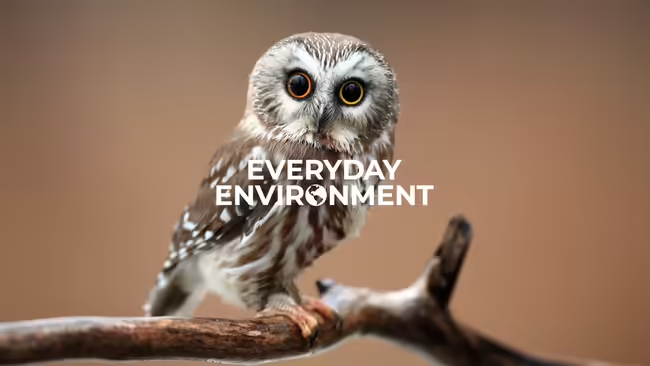
Unlock the secrets of Illinois’ smallest and most secretive owl species.
The northern saw-whet owl secretly lives in our backyards in the winter. Learn about the latest research, what researchers are looking for, and what we are learning about the birds.
Presenter: Michael Avara, Avian Lab Manager and Field Coordinator, University of Illinois.
About the Everyday Environment Series
Small changes have positive impacts on the environment. There is never a shortage of new things to learn about your everyday environment. The Everyday Environment Webinar series features a different environmental topic each month. Do your part to protect the planet for generations to enjoy. All sessions are free and take place on the second Thursday of the month at 1 p.m. Learn more about the series and register for individual events at go.illinois.edu/EverydayEnvironment.
Additional Fall Sessions
Monstrous Mussels, Creepy Carp: Explore Aquatic Invasives in Lake Michigan | Oct. 12, 1 p.m.
What lurks under the surface? Aquatic invasive species may seem like sea creatures from the movies, but the impact of these introduced plants and animals on Lake Michigan is no fiction. From blood-sucking sea lamprey to jumping silver carp, many AIS look and act like something out of a horror movie. Explore highlights of some of the lake's most infamous AIS and hear about the ongoing efforts to prevent new introductions and manage established species. Presenter: Katie O’Reilly, Aquatic Invasive Species Specialist, Illinois-Indiana Sea Grant. Register at go.illinois.edu/AquaticInvasiveSpecies.
Providing Natural and Artificial Homes for Bats | Nov. 9, 1 p.m.
Bats are essential to a healthy ecosystem, as they eat insects that are pests to trees, crops, and us. Most bats use trees as their daytimoe roosts during spring, summer, and fall. If a location has good places for bats to hunt for food, what attracts them to roost on the property? Learn what makes good natural and artificial roost habitats for bats and other ways to support the local bat populatin. Presenter: Dr. Joy O’Keefe, Assistant Professor and Wildlife Extension Specialist, University of Illinois. Register at go.illinois.edu/HomesForBats.